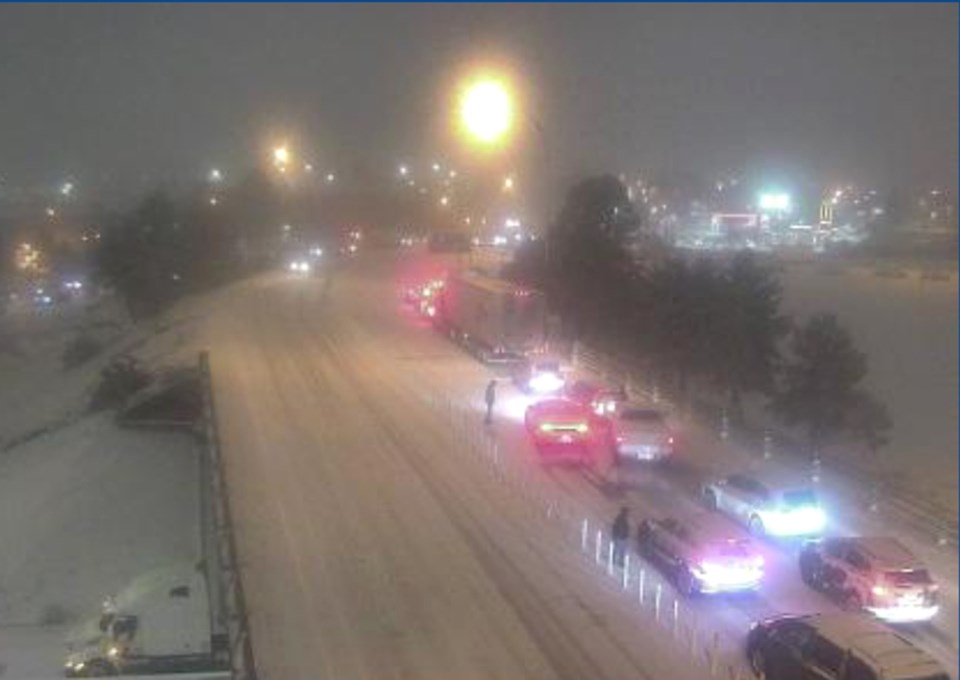More snow is expected for Metro Vancouver on Friday but it shouldn't be as dramatic and disruptive as Tuesday’s storm that resulted in a nightmare on the roads for afternoon commuters.
On Wednesday, Mainroad Lower Mainland Contracting released its plans for keeping roads clear.
Before a snowfall, Mainroad’s crews spray brine and or salt on to the roads it maintains, as it did prior to Tuesday’s snow.
During the winter, the contractor puts about 40 pieces of equipment and more than 100 people on to the streets to patrol, treat and clear roads.
Mainroad is responsible for maintaining provincial roads throughout Metro Vancouver, including Hwy. 91 and 91A, Hwy. 99, Hwy. 10, (from Hwy. 91 to Hwy. 1) Hwy. 17 and 17A, along with the Alex Fraser Bridge and the George Massey Tunnel in Delta.
During Tuesday’s snowfall, crews simply were not able to get to roads and bridges to perform road work because of the amount of traffic, said a Mainroad release.
“Tuesday’s storm, mixed with heavy congestion, created a gridlock traffic situation which was worsened by motorists that were not prepared for winter driving conditions, causing many incidents and stalls,” Mainroad said.
“The volume of gridlock prevented Mainroad crews from having full access to roads and bridge decks to perform winter maintenance.”
In a video, Mainroad general manager Darren Ell said motorists should also take their time, slow down and be cautious and patient, make sure their vehicle’s wipers are in good shape and that there’s enough washer fluid.
They should also check traffic and weather reports and DriveBC before heading out, avoid driving in bad conditions and make sure their vehicle has snow tires, an emergency kit and a full tank of gas or a full electrical charge.
Janelle Staite, regional director of highway services, told media Wednesday that 30 “pieces of equipment” were deployed on highways; however, a raft of problems compounded, leading to “some very extraordinary commutes for folks.”
First, traffic congestion began earlier than normal in the day, as commuters rushed home early. The bridge had one lane closed each way for crews to de-ice the cables in the late afternoon, said Staite. Snow then began falling very quickly, as much as six centimetres in an hour, she said. Car crashes then occurred on the bridge and the snowplows subsequently got stuck in traffic.
“The congestion was another piece of it that made it challenging for the pieces of equipment to do the work,” she told reporters.
Finally, snow and high winds forced the closure of the bridge, regardless of the vehicle accidents, said Staite.
-with files from Glacier Media


